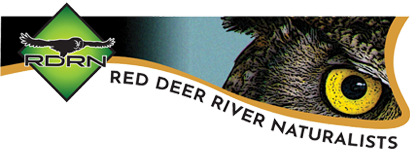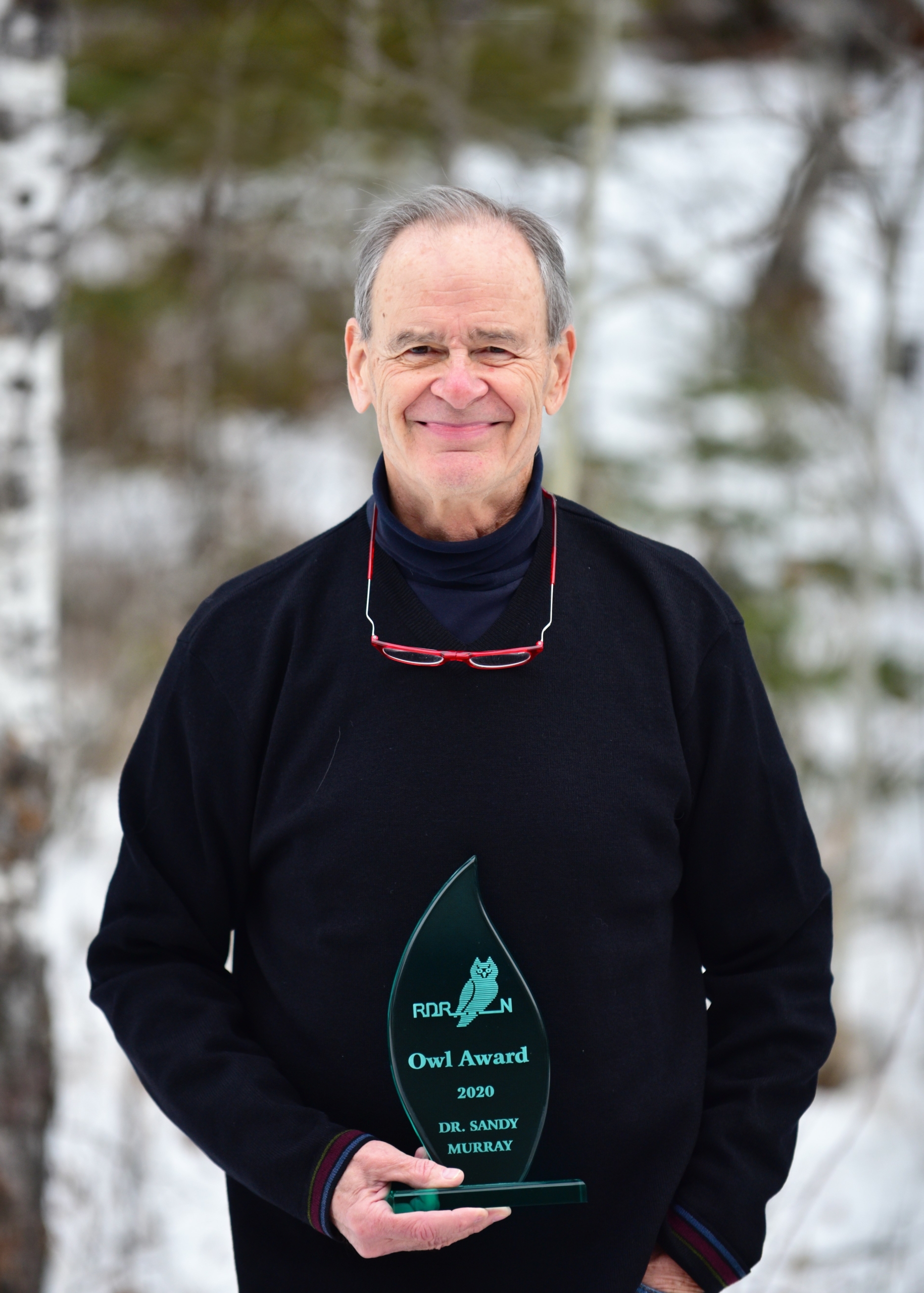2020 Owl AwardDr. Sandy Murray
We thank Dr. Sandy Murray for his dedication to RDRN and are pleased to present him, along with Dorothy, a 2020 Owl Award.
The Murrays joined the RDRN right after they moved back to Red Deer in 1980. It was a very busy period for the organization. Negotiations were underway for the Ellis Bird Farm agreement and Waskasoo Park planning had begun in the fall of 1981. After joining the Board, Sandy went on to serve as President in 1985 1986.
There are so many issues listed in the 1985 President’s report! Naturalists across the country combined forces to protest cuts to Nation al Parks, environmental research, the Canadian Wildlife Service, and to alternate energy research. We joined the Haida in an attempt to end clear cut logging on South Moresby Island. There was the “Blob” in the St. Claire River that represented a fraction of “the 200,000 tons of toxic waste dumped into that river daily” (interestingly millions have been spent on that river over the last 35 years to great effect) and the many other rivers in Canada including the Red Deer. In his report, Sandy noted “If we stopped polluting now (1985), it would take at least 200 years to clean up the Great Lakes.” Provincially, there was Don Sparrow’s Eastern Slopes policy to deal with, as well as the sale of public lands, hearings on ecological reserves, and the initiation of the Butcher Creek discussions in partnership with the Junior Forest Wardens. There was unruly opposition to this proposal out at the Garrington Community Centre. Members also presented briefs at the South Saskatchewan Basin River Basin and about the CPR right of way as it was moving out of downtown.
Locally, there was excitement as the Kerry Wood Nature Centre was under construction. In the midst of these activities, RDRN had 40 outings that year, organized volunteers to
rescue yellow lady slipper orchids from highway construction, and got involved in the annual Bluebird Festival as well as other community events.
The official opening of the Kerry Wood Nature Centre on August 4, 1986 was an exciting day for the Red Deer River Naturalists. Sandy’s remarks were four pages double spaced
but he certainly summarized the history of the Sanctuary, explaining how John Jost and Grace Gaetz played an early role in preserving it for the community, how Alberta Natural
History Society played a role in making it a Federal Bird Sanctuary, and how Kerry Wood worked tirelessly to protect it from many threats (including clear cutting, amusement parks, gravel pits, fires and roads). RDRN hosted 39 summer outings in 1986.
Shortly after the opening of Waskasoo Park came the annual mosquito debate. Sandy appeared before council and totally discredited a paper that had been presented by a pro
spraying Dr. Louise Jackson and her group. Council decided not to spray. It became an election issue that fall (Sandy wrote a blistering letter about that). With the assistance and
persistence of his friend, Michael O’Brien, the swing vote 5 4 turned out to be Councillor Gail Surkan.
In the El Nino spring of 1987, the City hired Grant Moir’s company to experiment with the Bacillu s thuringiensis israelensis (Bti) alternative that kills mosquito and black fly
larvae. It worked well. Grant was hired the next year to employ this and other strategies. This program led to the Eco spaces Management Plan and both received national attention
and an Emerald Award. Sandy’s presentation before Council was a turning point.
After his term as RDRN President, Sandy went on to serve as President of the Alberta Medical Association and founded the AMA Committee on Environmental Health and served as its Chairman. He made a presentation to the public hearings opposing the development of the Alberta Pacific (ALPAC) pulp and paper mill.
Dorothy and Sandy have been members of RDRN for over 40 years and continue to be involved in environmental actions in Alberta, Canada and the world.


